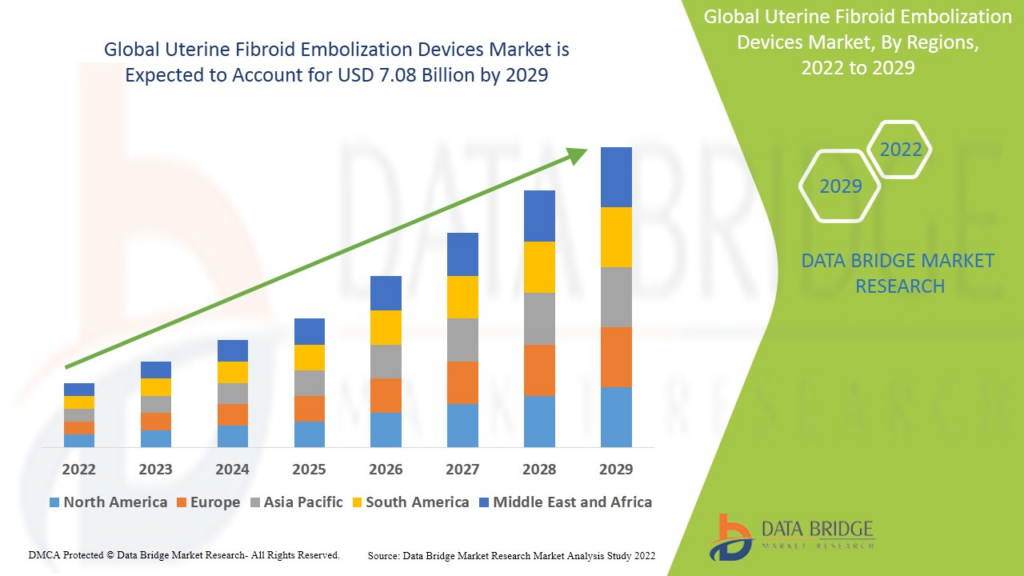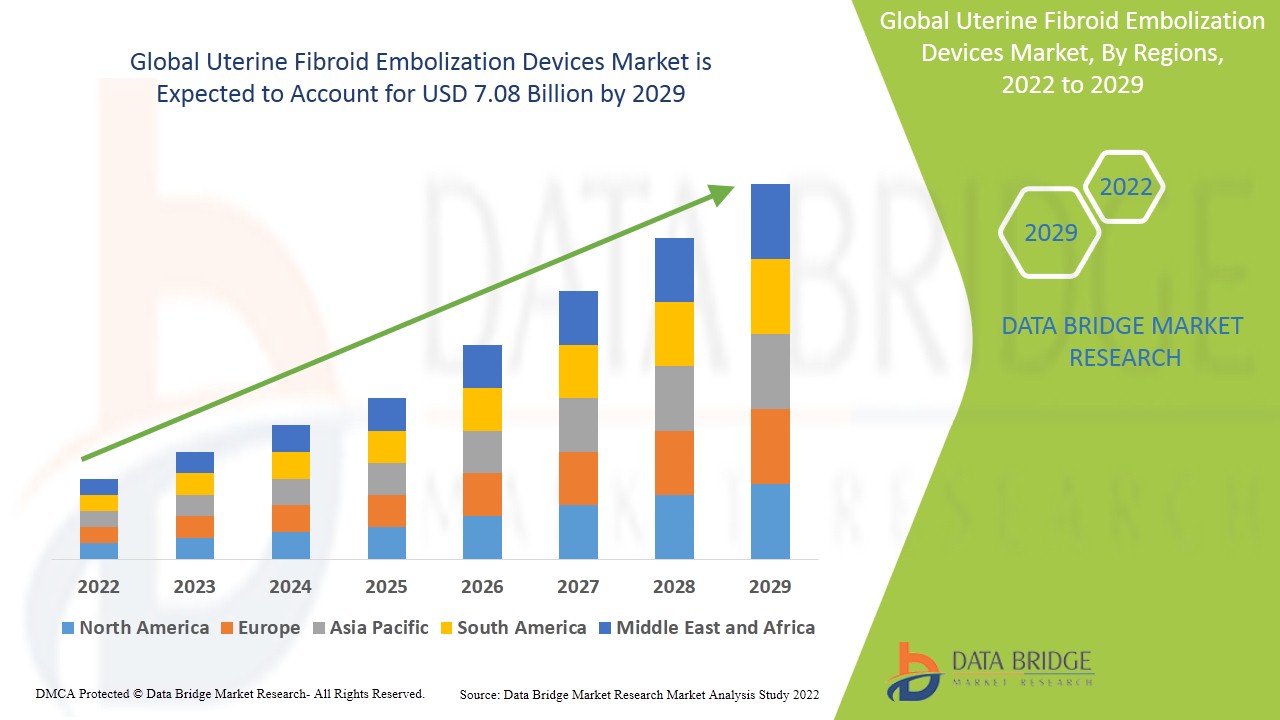Introduction
Uterine fibroids, benign tumors that grow within the uterus, affect millions of women globally, particularly those in their reproductive years. These growths can lead to a range of symptoms, including heavy menstrual bleeding, pelvic pain, and reproductive issues. While several treatment options exist, Uterine Fibroid Embolization (UFE) has emerged as a minimally invasive, uterus-sparing alternative to surgical procedures like hysterectomy and myomectomy. This has led to significant growth in the Uterine Fibroid Embolization Devices Market, fueled by technological advancements, increasing awareness, and the rising demand for minimally invasive procedures.

Market Overview
The uterine fibroid embolization devices market is part of the larger interventional radiology and women’s health sectors. These devices primarily include catheters, guidewires, and embolic agents such as microspheres or particles used to block the blood supply to fibroids, causing them to shrink over time.
The market has witnessed consistent growth, with projections estimating a compound annual growth rate (CAGR) between 8% and 10% over the forecast period (2024–2030). Factors contributing to this growth include the global rise in uterine fibroid cases, preference for outpatient procedures, and the increasing availability of interventional radiology services.
Key Market Drivers
1. Rising Prevalence of Uterine Fibroids
According to various health organizations, up to 70% of women may develop fibroids at some point in their lives. With increasing cases reported due to better diagnostics and awareness, the demand for effective and non-invasive treatment options like UFE is growing rapidly.
2. Shift Toward Minimally Invasive Procedures
Patients and healthcare providers increasingly prefer procedures that minimize hospital stay, reduce recovery time, and avoid general anesthesia. UFE fits this trend perfectly, often performed as a same-day outpatient procedure.
3. Technological Advancements
New embolic agents with improved biocompatibility, precision catheters for better targeting, and imaging techniques such as 3D angiography have enhanced the safety and efficacy of the procedure. Innovations are encouraging more physicians to adopt UFE in their practice.
4. Growing Awareness and Education
Campaigns from gynecology associations and patient advocacy groups have increased awareness of alternatives to hysterectomy, leading more women to explore UFE as a viable treatment path.
Market Segmentation
The uterine fibroid embolization devices market can be segmented based on:
A. Product Type
- Embolic Agents (Microspheres, Polyvinyl Alcohol Particles, Gelatin Beads)
- Catheters
- Guidewires
- Microcatheters
- Contrast Media
Embolic agents dominate the segment due to their direct role in blocking blood flow to fibroids.
B. End-User
- Hospitals
- Ambulatory Surgical Centers (ASCs)
- Specialty Clinics
Hospitals currently lead the market, but ASCs are expected to grow faster due to increasing preference for outpatient services.
C. Geography
- North America
- Europe
- Asia-Pacific
- Latin America
- Middle East & Africa
North America holds the largest market share due to established healthcare infrastructure, reimbursement systems, and high awareness levels. Asia-Pacific, however, is expected to witness the fastest growth due to expanding healthcare access and increasing fibroid incidence.
Competitive Landscape
The market is moderately consolidated with a few major players dominating. Key companies include:
- Boston Scientific Corporation
- Terumo Corporation
- Merit Medical Systems
- Cook Medical
- Varian (acquired by Siemens Healthineers)
- Sirtex Medical
- Guerbet Group
These players are investing heavily in R&D, product approvals, and strategic collaborations to gain market share. For example, Boston Scientific’s Embosphere® Microspheres are a leading embolic agent used in UFE procedures.
Challenges in the Market
Despite strong growth potential, the market faces several challenges:
1. Limited Awareness in Developing Countries
Many women remain unaware of UFE, especially in low- and middle-income countries where access to specialized interventional radiology is limited.
2. Lack of Trained Professionals
UFE requires skilled interventional radiologists, a resource not always available in every region. Training and certification can be a limiting factor in market penetration.
3. Regulatory Hurdles
Regulatory processes for device approval vary widely by country, potentially delaying product launches in emerging markets.
4. Competition from Other Treatments
Surgical options like laparoscopic myomectomy and newer treatments like MR-guided focused ultrasound continue to pose competition, depending on patient preference and fibroid size/location.
Future Outlook
The future of the uterine fibroid embolization devices market looks promising, with several trends shaping its trajectory:
– Personalized Treatment Plans
With growing access to MRI and 3D imaging, UFE can be better customized based on fibroid size, number, and location, increasing its effectiveness.
– Increased Public-Private Partnerships
Collaborations between governments and medical device companies are improving access to UFE in underserved areas.
– Telemedicine and Remote Training
The use of virtual training platforms for radiologists and gynecologists is helping spread awareness and procedural competency.
– Integration with AI and Robotics
AI-powered imaging systems and robotic catheter navigation could further refine UFE procedures, reduce error margins, and improve patient outcomes.
Conclusion
The uterine fibroid embolization devices market is at the intersection of technological innovation, rising patient awareness, and the global push for less invasive medical treatments. With growing clinical evidence supporting UFE’s efficacy and safety, this market segment is poised for substantial expansion. Continued investment in R&D, training, and patient education will be crucial to overcoming current challenges and ensuring that women worldwide have access to this life-enhancing treatment option.
Read More : https://www.databridgemarketresearch.com/reports/global-uterine-fibroid-embolization-devices-market












Leave a Reply